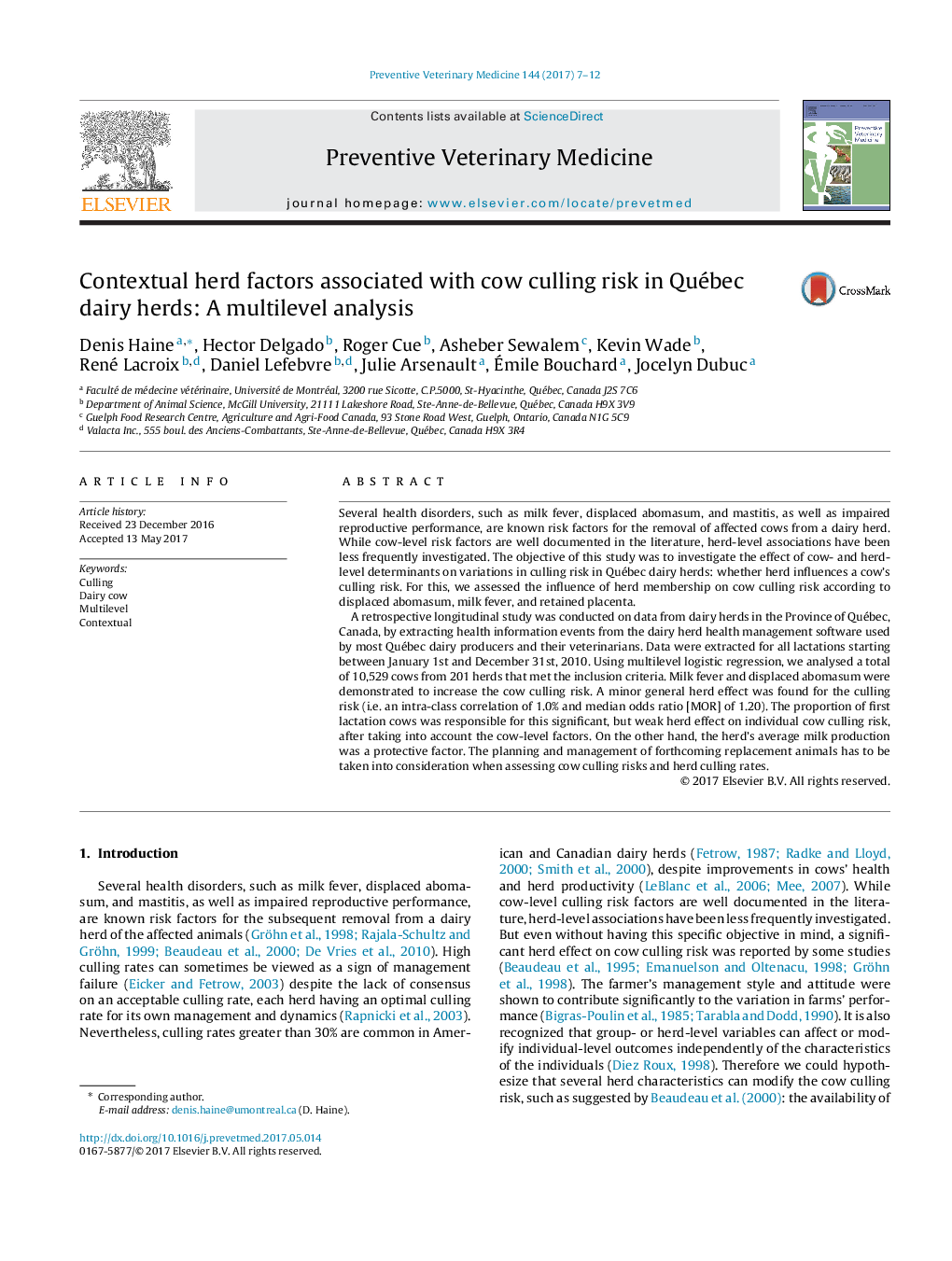| Article ID | Journal | Published Year | Pages | File Type |
|---|---|---|---|---|
| 5543704 | Preventive Veterinary Medicine | 2017 | 6 Pages |
Abstract
A retrospective longitudinal study was conducted on data from dairy herds in the Province of Québec, Canada, by extracting health information events from the dairy herd health management software used by most Québec dairy producers and their veterinarians. Data were extracted for all lactations starting between January 1st and December 31st, 2010. Using multilevel logistic regression, we analysed a total of 10,529 cows from 201 herds that met the inclusion criteria. Milk fever and displaced abomasum were demonstrated to increase the cow culling risk. A minor general herd effect was found for the culling risk (i.e. an intra-class correlation of 1.0% and median odds ratio [MOR] of 1.20). The proportion of first lactation cows was responsible for this significant, but weak herd effect on individual cow culling risk, after taking into account the cow-level factors. On the other hand, the herd's average milk production was a protective factor. The planning and management of forthcoming replacement animals has to be taken into consideration when assessing cow culling risks and herd culling rates.
Keywords
Related Topics
Life Sciences
Agricultural and Biological Sciences
Animal Science and Zoology
Authors
Denis Haine, Hector Delgado, Roger Cue, Asheber Sewalem, Kevin Wade, René Lacroix, Daniel Lefebvre, Julie Arsenault, Ãmile Bouchard, Jocelyn Dubuc,
